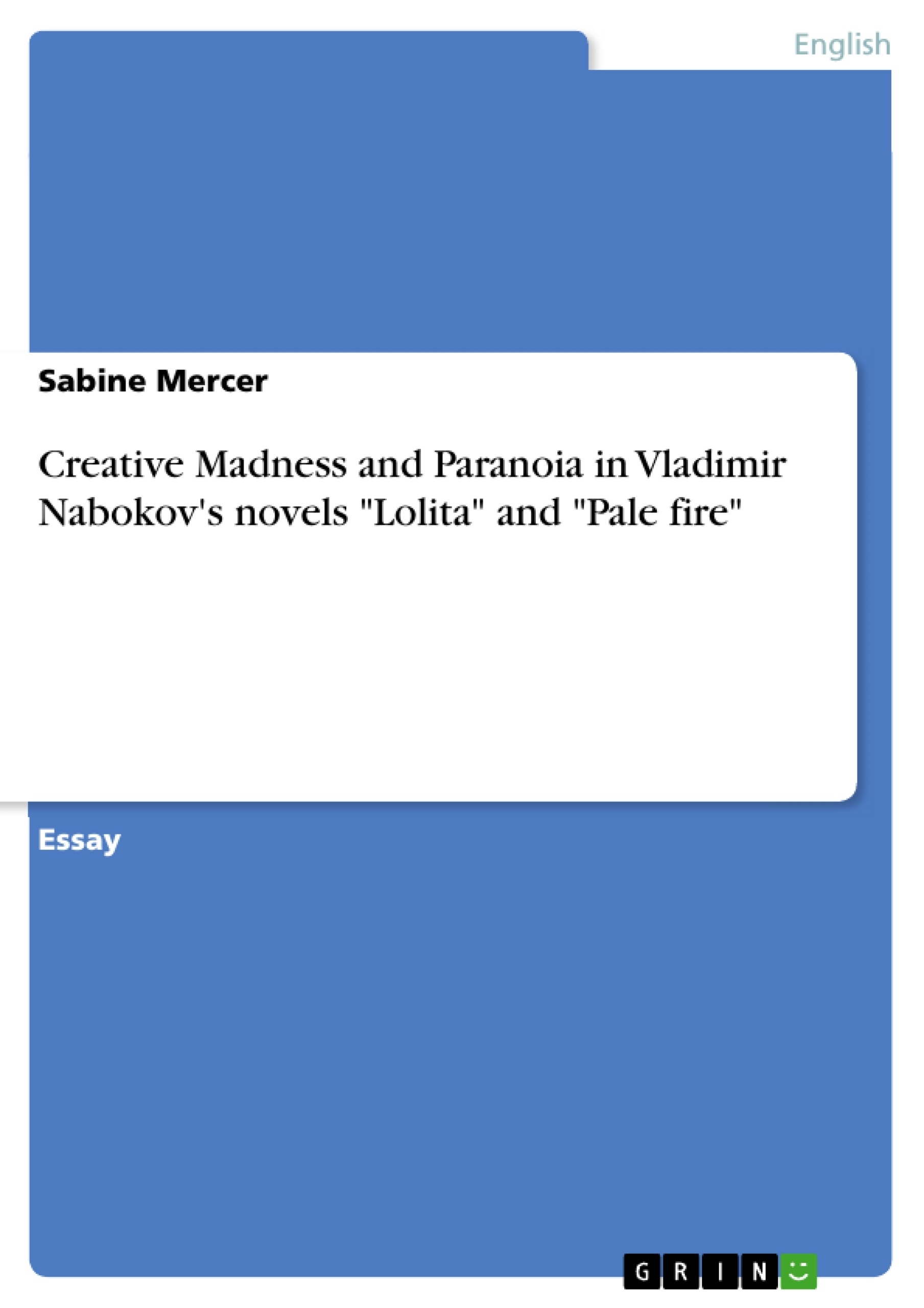The clinical picture of paranoid narcissism and its inherent contradictions provides a particularly useful framework for revisiting Nabokov’s work. The premise that the novels are studies of paranoid selves, who suffer from an interpretive delirium that rejects the real in order to impose meaning, has not been explored in sufficient depth to date. A more developed understanding of the pathology of paranoia and schizophrenia as delusional disorders helps to elucidate that the protagonists are locked in internally consistent systems of false beliefs. Their alternating states of grandeur and persecution are an implicit critique of Modernism’s tendency to professionalize artists and art criticism.
Table of Contents
- INTRODUCTION
- Doublings and Mirrors
- The Paranoid Interpreter
Objectives and Key Themes
This essay examines Nabokov's portrayal of paranoid minds in Lolita and Pale Fire, arguing that these portrayals implicitly critique the professionalization of artists and art criticism in Modernism. It uses the framework of paranoid narcissism to analyze the protagonists' interpretive delirium and rejection of reality.
- Paranoia and its literary representation in Modernism
- The critique of professionalization in art and criticism
- The use of mirroring and doubling to explore the protagonist's psychology
- The blurring of lines between reality and interpretation
- The role of the reader in complicity and judgment
Chapter Summaries
INTRODUCTION: This introduction establishes the essay's central argument: that Nabokov's portrayal of paranoid minds in *Lolita* and *Pale Fire* serves as a critique of the professionalization of art and criticism in Modernism. It draws upon the work of Trotter and Sass, highlighting the connection between paranoia, delusion, and the sophisticated art of the 20th century. The introduction positions Nabokov's protagonists, Humbert Humbert and Charles Kinbote, as figures locked in internally consistent systems of false beliefs, their delusions stemming from a rejection of reality in favor of imposed meaning. The essay promises a deeper exploration of the pathology of paranoia and schizophrenia as delusional disorders to illuminate the protagonists' actions and motivations.
Doublings and Mirrors: This chapter analyzes the mirroring and doubling present in *Lolita*, focusing on the relationship between Humbert Humbert and Clare Quilty. It explores Humbert's manipulation of the reader through his narrative voice, shifting from detached observation to intimate address, ultimately provoking a complicity in the reader's voyeuristic desires. The chapter compares Humbert and Quilty to Baudelaire's dandy, highlighting their shared attempts to undermine societal hierarchies and morality through a cynical lens and aesthetic rule-making. The chapter also emphasizes Humbert's self-imposed "legal captivity" and his perception of Dolores as ape-like, using this imagery to illustrate his narcissistic self-entrapment and projection of his own flaws onto others. The murder of Quilty is interpreted not simply as revenge but also as a metaphorical suicide, reflecting Humbert's self-destruction and the blurring of their identities within the narrative. The chapter concludes by analyzing the linguistic confusion surrounding Quilty's death as a reflection of the intertwined and ultimately indistinguishable nature of Humbert and Quilty, illustrating the psychological complexities of the novel.
Keywords
Nabokov, Lolita, Pale Fire, paranoia, schizophrenia, Modernism, art criticism, professionalization, delusion, interpretation, doubling, mirroring, narcissism, reader complicity, Humbert Humbert, Charles Kinbote, Clare Quilty.
Frequently Asked Questions: A Comprehensive Language Preview
What is the main argument of this essay?
The essay argues that Vladimir Nabokov's portrayal of paranoid minds in Lolita and Pale Fire serves as a critique of the professionalization of art and criticism in Modernism. It uses the framework of paranoid narcissism to analyze the protagonists' interpretive delirium and rejection of reality.
What are the key themes explored in the essay?
Key themes include paranoia and its literary representation in Modernism; the critique of professionalization in art and criticism; the use of mirroring and doubling to explore the protagonist's psychology; the blurring of lines between reality and interpretation; and the role of the reader in complicity and judgment.
Which novels are analyzed in this essay?
The essay focuses on Vladimir Nabokov's novels Lolita and Pale Fire, analyzing the portrayal of paranoia in their respective protagonists, Humbert Humbert and Charles Kinbote.
How does the essay analyze the protagonists' paranoia?
The essay uses the framework of paranoid narcissism to analyze the protagonists' interpretive delirium and rejection of reality. It examines how their delusional systems are internally consistent and stem from a rejection of objective reality in favor of imposed meaning.
What is the significance of mirroring and doubling in the novels?
Mirroring and doubling, particularly the relationship between Humbert Humbert and Clare Quilty in Lolita, are analyzed to illuminate the protagonists' psychological complexities and the blurring of lines between their identities. These techniques highlight the protagonists' self-entrapment and projection of flaws onto others.
What role does the reader play in Nabokov's novels, according to the essay?
The essay explores how Nabokov manipulates the reader through narrative voice, provoking complicity in the protagonists' actions and desires. The reader's role in judging the characters and their actions is a significant aspect of the analysis.
What is the connection between paranoia and Modernism, as discussed in the essay?
The essay explores the connection between the pathology of paranoia and schizophrenia as delusional disorders, linking them to the sophisticated art of the 20th century and the professionalization of art and criticism within the Modernist movement.
What are the key concepts discussed in the chapter "Doublings and Mirrors"?
This chapter analyzes the mirroring and doubling in *Lolita*, focusing on the Humbert-Quilty relationship. It examines Humbert's manipulation of the reader, compares Humbert and Quilty to Baudelaire's dandy, and interprets Quilty's murder as a metaphorical suicide reflecting Humbert's self-destruction.
What are the key words associated with this essay?
Key words include Nabokov, Lolita, Pale Fire, paranoia, schizophrenia, Modernism, art criticism, professionalization, delusion, interpretation, doubling, mirroring, narcissism, reader complicity, Humbert Humbert, Charles Kinbote, and Clare Quilty.
- Quote paper
- Dr. Sabine Mercer (Author), 2011, Creative Madness and Paranoia in Vladimir Nabokov's novels "Lolita" and "Pale fire", Munich, GRIN Verlag, https://www.grin.com/document/417229




